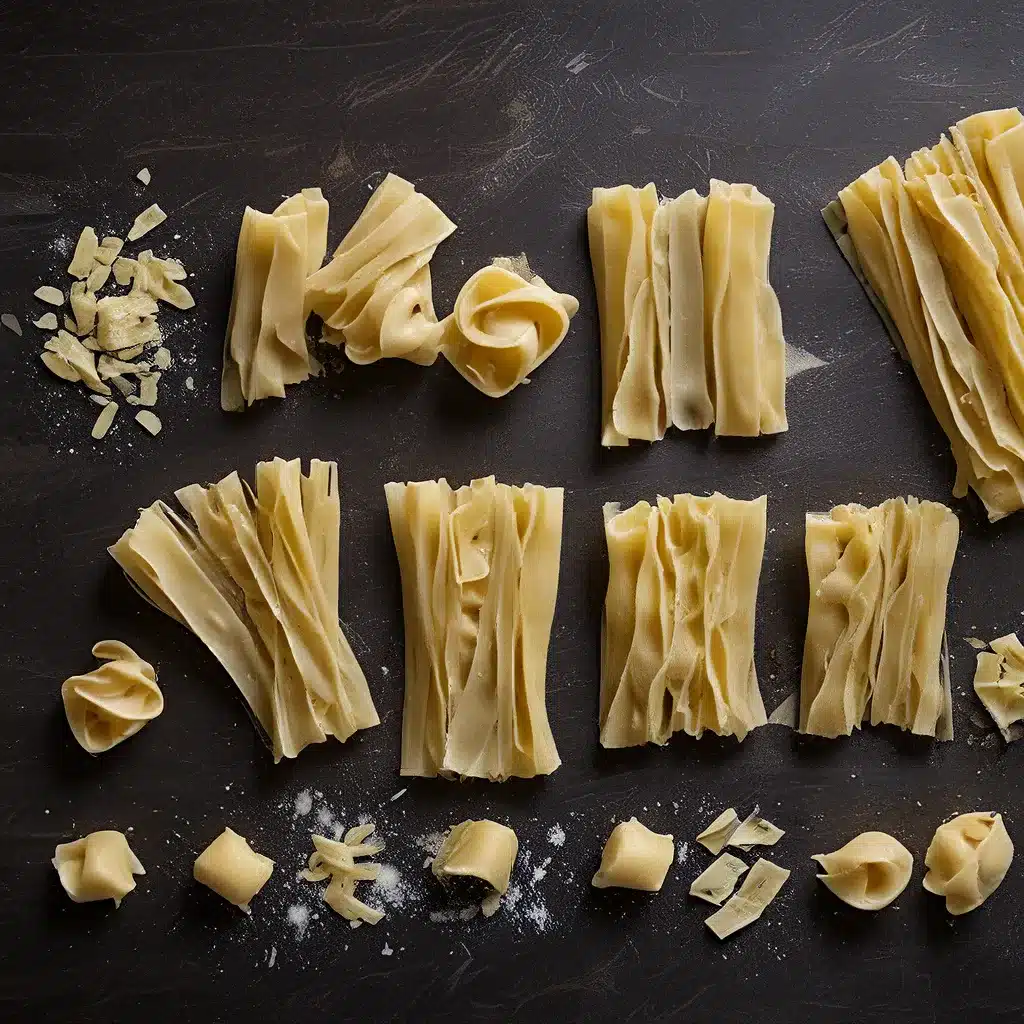
The Allure of Homemade Pasta
Ah, the irresistible allure of homemade pasta! There’s just something about the process of transforming a simple mixture of flour and eggs into silky, tender ribbons of carbohydrate bliss that captivates the heart and taste buds. Growing up, I have fond memories of watching my nonna roll out sheets of dough on her well-worn kitchen counter, meticulously cutting them into perfect little fettuccine or lasagna noodles. The ritual was as mesmerizing as it was delicious.
For many of us, the idea of making pasta from scratch can seem daunting, like an unattainable culinary feat reserved only for the most seasoned of chefs. But I’m here to tell you that with a little know-how and a lot of enthusiasm, anyone can master the art of homemade pasta. It’s a skill that’s well worth the effort, as the flavor and texture of freshly made noodles simply can’t be replicated by their store-bought counterparts.
The Basics of Pasta Dough
At its core, homemade pasta dough is a simple combination of flour and eggs. The classic recipe typically calls for a soft wheat flour, like all-purpose or ’00’ flour, and large eggs. The ratio of flour to eggs can vary, but a good rule of thumb is to use about 185 grams of total egg (yolks and whites) for every 300 grams of flour.
The Clever Carrot offers a helpful tip: “Because eggs size will vary, make up the difference if needed with an extra egg yolk or olive oil. Olive oil makes the dough more soft, supple, and satisfying to work with.”
The key is to knead the dough until it develops a smooth, elastic texture. This can be done by hand, with a stand mixer, or even in a food processor. Once the dough has rested, it’s time to roll it out into thin sheets and cut it into the desired shapes.
Mastering the Rolling and Cutting Techniques
The YouTube tutorial I watched emphasized the importance of having a clean, clutter-free work surface to roll out the pasta dough. This gives you ample space to spread and manipulate the sheets without any distractions.
One of the most common tools used for rolling out pasta dough is a pasta roller attachment for a stand mixer. This handy gadget allows you to gradually feed the dough through a series of narrowing rollers, resulting in beautifully thin, even sheets. If you don’t have a pasta roller, you can easily roll out the dough by hand using a rolling pin. Just be sure to dust your work surface and the dough liberally with semolina flour to prevent sticking.
Saint Marc has a wide selection of high-quality pasta makers and accessories to take your homemade pasta game to the next level.
Once you’ve rolled out the dough, the fun part begins: cutting the pasta into your desired shapes. You can use a sharp knife or a pasta cutter to slice the sheets into long, thin ribbons for fettuccine or pappardelle. For ravioli or other filled pastas, simply cut the sheets into squares or rounds using a ravioli cutter or a sharp knife.
Storing and Cooking Your Homemade Pasta
One of the best things about making pasta at home is that you can prepare it in advance and freeze it for later use. After cutting the pasta, simply let it air-dry for 15-20 minutes before transferring it to an airtight container or zip-top bag for freezing. This helps prevent the delicate noodles from sticking together.
When you’re ready to enjoy your homemade pasta, simply add it directly from the freezer to a large pot of salted, boiling water. No need to defrost – the pasta will cook up perfectly al dente in just a few minutes. Be sure to taste it as it cooks, as the cooking time can vary depending on the thickness of your noodles.
The Joy of Homemade Pasta
As I mentioned earlier, the process of making pasta from scratch can be a truly mesmerizing experience. There’s something almost meditative about kneading the dough, rolling it out, and shaping the noodles. It’s a chance to slow down, disconnect from the digital noise, and connect with the tactile, sensory experience of crafting something delicious with your own two hands.
And the payoff, of course, is in the flavor and texture of the final product. Homemade pasta is simply unparalleled in its fresh, lively taste and toothsome bite. Whether you’re serving it with a simple tomato sauce, a creamy Alfredo, or an elegant ragu, the homemade touch will elevate the entire dining experience.
So, what are you waiting for? Grab a few ingredients, clear off your kitchen counter, and let’s get to work on mastering the art of homemade pasta. Your taste buds (and your inner nonna) will thank you.

